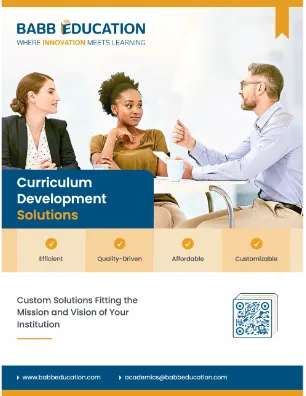Beyond ChatGPT: A University Leader's Guide to Strategic AI Integration in Education
Transforming Pedagogy, Not Just Policing Plagiarism
Since the public arrival of tools like ChatGPT, the conversation on many campuses has been dominated by a single, fearful question: "How do we stop students from cheating?"
This is the wrong question.
Focusing solely on plagiarism is like trying to patch a single leak on a ship sailing into a hurricane. It misses the monumental scale of the change at hand.
The real threat isn't that students will use AI to cheat on old assignments; it's that our institutions will fail to adapt, rendering our methods, our assessments, and even some of our degrees obsolete.
The right question is: "How do we leverage AI to fundamentally enhance learning and better prepare students for an AI-integrated world?"
The answer requires a strategic vision, not a new piece of detection software. It requires leadership that champions pedagogy over policing. This guide provides a substantive, actionable blueprint for university leaders to steer their institutions from a position of fear to one of innovation and strength.
The Real Challenge: Moving from Outdated Assessments to Future-Proof Skills
The panic over AI-assisted plagiarism has laid bare a long-unspoken truth in higher education: many of our traditional assessment methods reward mimicry over mastery. Essays that summarize known facts, exams based on rote memorization, and problem sets with single correct answers are precisely the tasks at which generative AI excels.
Instead of fighting a losing battle to "AI-proof" these assignments, we must see this as an unprecedented opportunity to evolve. The future of work demands skills that AI cannot replicate: critical thinking, creative problem-solving, ethical reasoning, and collaborative innovation. Our pedagogy and assessments must be redesigned to cultivate these exact competencies.
This is where the strategic role of instructional design in education becomes paramount. Your instructional design team should not be a reactive service department; they must be empowered as your chief architects in this pedagogical reconstruction.
The Leader's Blueprint: Three Pillars for Strategic AI Integration
Navigating this transition requires a clear framework. As a university leader, you can champion this change by focusing on three core pillars.
Pillar 1: Establish a Visionary and Ethical Framework
Before you can effectively integrate a tool, you must define its purpose and its boundaries. Your first role is to lead the conversation, moving it from the faculty lounge to the strategic planning table.
- Create an AI Task Force: Assemble a cross-disciplinary team including your VP of Academic Affairs, lead instructional designers, faculty representatives from arts and sciences, IT leadership, and a student representative. Their mandate isn't just to write an academic integrity policy, but to develop guiding principles for the ethical and pedagogical use of AI on campus.
- Define "AI Literacy": Work with this task force to define AI literacy as a core competency for your graduates. What does every student, regardless of major, need to understand about how these tools work, their inherent biases, and their ethical implications? This definition will become the North Star for curriculum development.
- Invest in Policy, Not Just Products: Instead of rushing to purchase the latest AI detection software—an arms race you will lose—invest the time in developing a clear, flexible, and empowering AI usage policy. Differentiate between "unauthorized use" and "AI-assisted scholarship." Encourage faculty to define acceptable use on a per-assignment basis, treating AI as they would any other research tool or collaborator.
Pillar 2: Invest in Your People—Empower Faculty and Prepare Students
A vision is powerless without people to execute it. Your faculty are the key to transforming pedagogy, but they cannot do it without robust support.
- Reframe Faculty Development: Your faculty development initiatives for the next 18 months should be laser-focused on AI. But this isn't just about "how to use ChatGPT." It's about deep, pedagogical change. Partner with your Center for Teaching and Learning and your instructional design team to create workshops on:
- Assignment Redesign: Moving from the traditional essay to multi-stage projects where students use AI for brainstorming, then critique its output, and finally create a novel synthesis.
- AI as a "Teammate": Teaching faculty how to use AI to create case studies, debate prompts, and differentiated learning materials, saving them time to focus on higher-impact student interaction.
- Assessing Process, Not Just Product: Developing rubrics that grade students on their research process, their critical evaluation of sources (including AI), and the originality of their final argument.
- Empower Students Ethically: Do not leave students to figure this out on their own. Integrate AI literacy modules into first-year seminars. Teach them how to write effective prompts, how to critically evaluate AI-generated content for bias and inaccuracy, and how to properly cite AI as a tool. By teaching them how to use it, you reduce the incentive to misuse it.
Pillar 3: Champion a Pedagogical Revolution with Your Instructional Design Team
This is where strategy becomes reality. Your instructional design and learning experience (LX) design professionals are the translators who can turn your high-level vision into exceptional courses.
- Elevate Your ID Team: Position your instructional design department as a strategic partner to deans and department chairs. They have the expertise in learning science and educational technology to lead the charge. Empower them to conduct departmental reviews and proactively consult on curriculum-wide changes, not just individual course builds.
- Incentivize Redesign: Create institutional incentives for faculty who partner with instructional designers to fundamentally redesign their courses for an AI-rich environment. These "AI Pedagogy Grants" or course releases send a powerful message that the institution values this work.
- Showcase the "Art of the Possible": Work with your team to build and widely publicize "model courses" that exemplify outstanding AI integration. Imagine a history course where students use AI to simulate debates between historical figures, or a business course where students use AI-generated market data to build and defend a business plan. Show, don't just tell.
Conclusion: From Perceived Threat to Generational Opportunity
The rise of generative AI is not a minor disruption; it is an inflection point for higher education. As a leader, you have a choice. You can direct your institution's resources toward a defensive crouch, attempting to police a technology that is already ubiquitous, or you can stand up and lead a transformation.
By focusing on a strategic vision, investing deeply in your faculty, and empowering your instructional design experts, you can steer your institution toward a future where AI is not a threat to academic integrity, but a powerful catalyst for deeper learning, greater equity, and renewed relevance.
The future isn't about building better walls. It's about designing better classrooms. The blueprint is here. It's time to start building.



